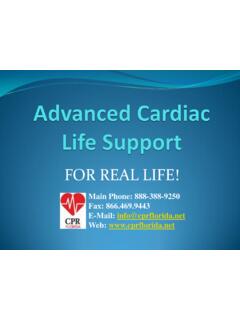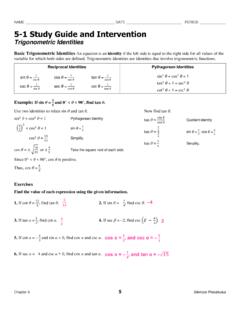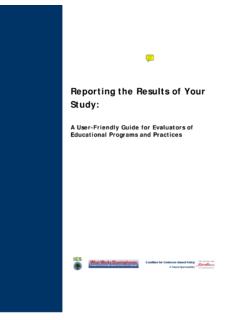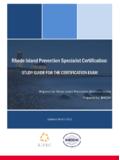Transcription of ACLS Study Guide (2020 Guidelines) - CPR Florida
1 acls Study Guide ( 2020 guidelines ). Pre-Course Requirements The acls course now requires a mandatory Precourse Self-Assessment and Precourse Work with a passing score of at least 70%. Students may take the self-assessment as many times as needed. Please bring your Certificate of Completion with you to the acls class or email in advance to Instructions for accessing the Precourse Requirements are included in your registration confirmation. acls Written Exam The acls Provider exam is 50 multiple-choice questions, with a required passing score is 84%. All AHA exams are now open resource which means student may use the acls manual, Study guides, handouts and personal notes during the exam. Using the acls Provider Manual ahead of time with the online resources is very helpful.
2 BLS Review Assessment Steps for BLS Compressions 1. Make sure scene is safe At least 2 inches with a rate between 100 120/min 2. Tap/shout to check for responsiveness Allow for full recoil 3. Call for help if patient is unresponsive PEtCO2 (intubated) < 10 mmHg indicates poor compressions 4. Check for pulse and breathing for at least 5 but no Interruptions in compressions should be < 10 seconds more than 10 seconds Switch compressors every 2 min. 5. If no pulse (or not sure if there is a pulse) begin CPR Waveform Capnography is the most reliable method of confirming placement and monitoring of ETT. Pre-charging the defibrillator 15 seconds before the rhythm can improve CCV. Breaths During CPR Rescue Breathing Limit interruptions to less than 10 seconds For a patient who is not breathing or breathing effectively Ratio of compressions to breaths 30:2 or other give 1 breath every 6 seconds advanced protocols that maximize CCF Give breaths gently, over 1 second Each breath given over 1 second An effective breath will result in visible rise/fall of the chest An effective breath will result in visible chest rise Excessive ventilation decreases cardiac output CPR with ETT: 1 breath every 6 seconds with Difficulty positioning airway for patency, place NPA or OPA.
3 Continuous compressions OPA Placement = Measure from the corner of the mouth to the angle of the mandible Excessive ventilation = decreased cardiac output ACS and Stroke ACS - STEMI Stroke Assessment: Pale, cool, diaphoretic, chest pain, Noncontrast Head CT within 20 min. of hospital arrival. A. dyspnea, anxiety, hypotension, poor perfusion normal CT may rule out hemorrhagic stroke Aspirin 162-325 mg To better facilitate care, notify receiving hospital in advance Time frame to start Coronary Reperfusion (PCI) Ischemic Stroke: start fibrinolytic therapy ASAP if there are should be < 90min from ER arrival no contraindications Hemorrhagic Stroke: neuro consult RRT and MET (Rapid Response Team / Medical Emergency Team). MET / RRT focuses on prevention of deuteriation to cardiac arrest Improve patient care by identifying and treating early clinical deterioration Express Training Solutions | | Updated: JAN 2021.
4 acls Study Guide ( 2020 guidelines ). Effective Team Dynamics 1. Clear roles and responsibilities: Team leader should clearly delegate tasks 2. Knowing your limitation: Stay in scope of practice / ask for a new role if inappropriately assigned 3. Constructive interventions: if someone is about to make a mistake address that team member immediately 4. Knowledge sharing 5. Summarizing and Re-evaluation 6. Clear and Closed loop communication: Repeat back the order, clarify if intervention or dosage is incorrect 7. Mutual respect 8. Team Roles: Team Leader, Compressor, Airway, Medications, Monitor/Defib, Recorder/Timer, CPR Coach CPR Coach focuses on ensuring high quality CPR. Bradycardia and Tachycardia Bradycardia with a Pulse Tachycardia with a Pulse If symptomatic, give Atropine, 1 mg every 3-5 min, If unstable, immediate synchronized cardioversion max total dose of 3 mg If stable, 12-lead and expert consultation If stable, 12-lead and get expert consultation If stable w/narrow QRS: Adenosine 1st dose 6 mg / 2nd dose 12 mg Cardiac Arrest (No Pulse).
5 Assessment Findings pVT/VF ASYSTOLE/PEA. Unresponsive CPR first and while defib is charging CPR first No pulse & no breathing 1 mg epinephrine q 3-5 min (1st drug) Not shockable May have agonal gasps Amiodarone 1st dose 300 mg / 2nd 150 mg 1 mg epinephrine q 3-5 min Only 2 shockable rhythms in cardiac arrest If no pulse and not pVT, VF, or May use Lidocaine instead of Amiodarone asystole, then you have PEA. Manual Defibrillation Post Resuscitation / After ROSC. Immediately after you shock compressions 1. Optimize ventilation and oxygenation Immediately if no shock indicated compressions 2. Treat Hypotension, SBP < 90 mmHg While setting up defibrillation to shock 3. If STEMI Cath Lab compressions 4. If unable to follow command: targeted temperature Continue CPR while the defib is charging management Charge defibrillator before conducing a rhythm check 32-36 C for at least 24 hours can help increase chest compression fraction Tachycardia Rhythms with a Pulse Stable = good BP and good mentation / Unstable = low BP and poor mentation (Follow Tachycardia Algorithm).
6 Sinus Tachycardia Atrial Fibrillation Supraventricular Tachycardia Monomorphic Ventricular Tachycardia Express Training Solutions | | Updated: JAN 2021. acls Study Guide ( 2020 guidelines ). Atrial Flutter Polymorphic Ventricular Tachycardia Bradycardia Rhythms with a Pulse Non-symptomatic = good BP & good mentation / Symptomatic = low BP and poor mentation (Follow Bradycardia Algorithm). Sinus Bradycardia 2nd Degree Heart Block, Type 2. 1st Degree Heart Block 3rd Degree Heart Block 2nd Degree Heart Block, Type 1. Pulseless Rhythms (Cardiac Arrest). 1st Start CPR | 2nd Shock pVT/VF Immediately | 3rd Establish IV Access & give Epi | 4th Treat Reversible Causes (H/T). Pulseless Ventricular Tachycardia (Monomorphic) Asystole Pulseless Ventricular Tachycardia (Polymorphic) PEA (Pulseless Electrical Activity).
7 Ventricular Fibrillation PEA is any organized rhythm without a pulse that is not VF or pVT. REGISTER FOR ALL CLASSES AT Express Training Solutions | | Updated: JAN 2021.







